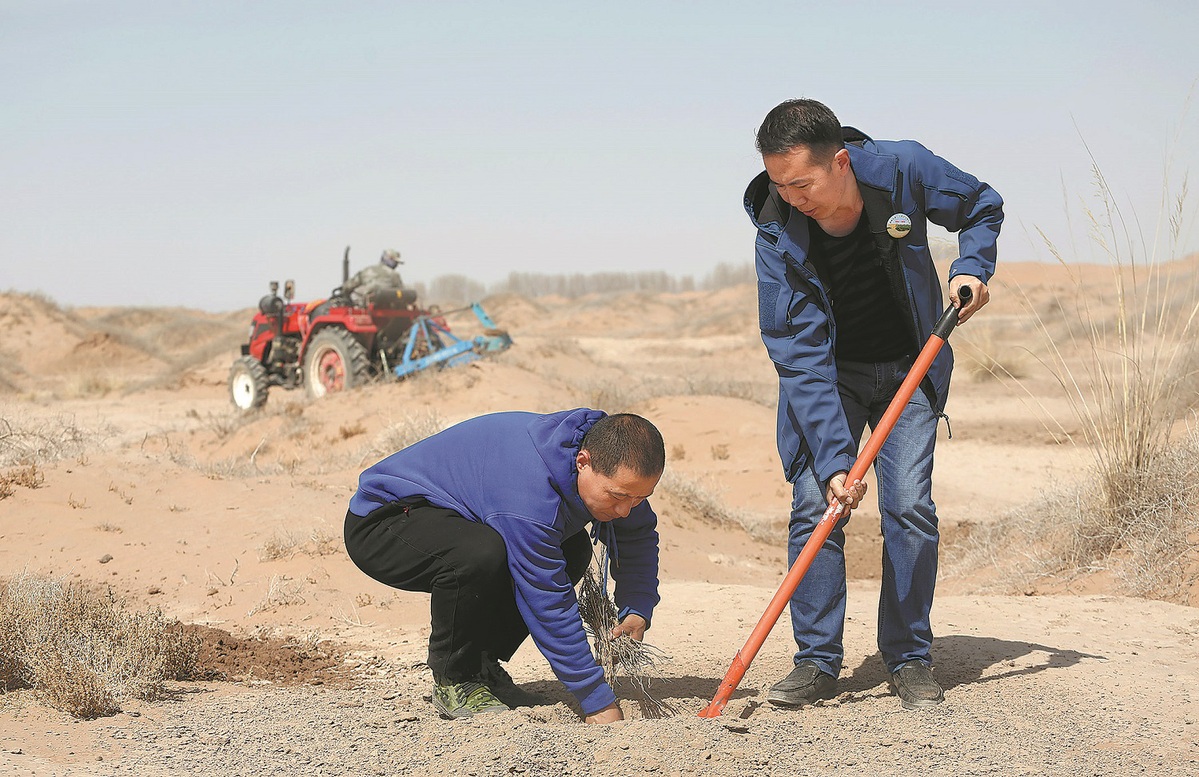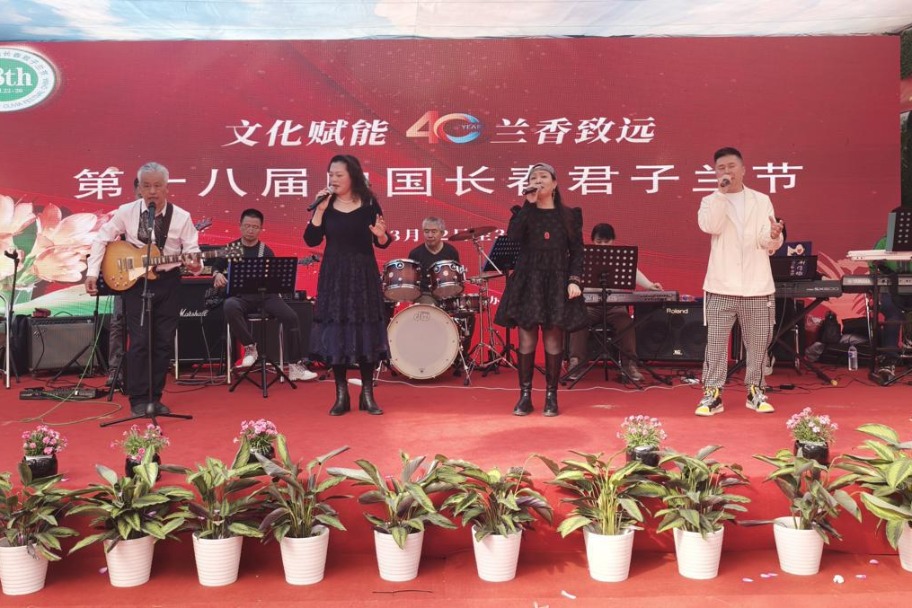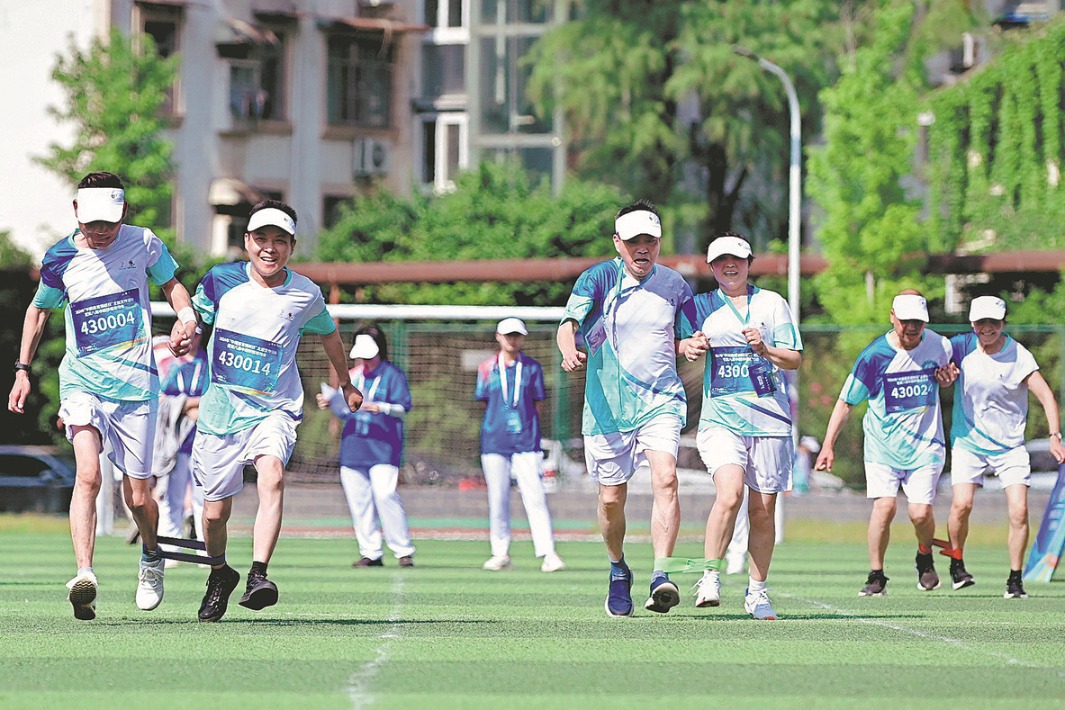Dedicated locals devote themselves to ending desertification


Judging by the color of the sand and the direction of the wind, Ma Junhe from Minqin county, Gansu province, can tell the precise origin of a sandstorm when it hits. He said such a skill is common among people who live next to deserts as they are the ones who truly understand why anti-desertification efforts are so urgent for China.
"People say when the spring wind blows over your cheeks, it feels so soft that it's like being touched by the hands of your caring mother. It's also true in Minqin, but in a completely different scenario. When the strong wind mixed with sand hits you in the face, it feels like being slapped by your mother after you've been naughty," said the 43-year-old, who grew up in the county.
Sitting on the wafer-thin oasis between the Badain Jaran and Tengger deserts, Minqin's survival depends on fighting back the spreading sands. The local people know too well that if the county fails, not only would they become ecological refugees, the two deserts would also join together, posing a greater threat to China's development.
"People in the city may be hit by sandstorms now and then, but here we can see how it forms, so we know how urgent it is to stabilize the deserts. No matter how technologies evolve, it's always down to the people to build and guard the green belts," Ma said.
Ma was working as a salesperson in the city of Lanzhou 350 kilometers away when he decided to do something to save his home county in 2007, after he heard that Minqin was going to disappear.
For the local people, the slogan "Minqin must not become another Lop Nur" became a mantra during the 2000s. The phrase referred to Lop Nur Lake in northwestern Xinjiang Uygur autonomous region, which was a 3,100 square km expanse of water in the 1920s, but has now almost entirely disappeared. Back then, Qingtu Lake in the county was shrinking fast due to desertification. People feared that it might end up like Lop Nur and they would have no choice but to abandon their home.
In 2007, Ma co-founded the Saving Minqin Volunteers Association, a nonprofit organization getting people involved in planting sand-binding shrubs such as saxaul and Calligonum mongolicum on the edge of the two deserts.
Since taking on desertification control as his full-time job in 2009, he's spent an average of nine months a year working in the deserts. In March 2022, he and his team took on the difficult task of building a part of the greenbelt, preventing sands from shifting in the north of the county often hit by strong wind and sandstorms, as a part of the Three-North Shelterbelt Program.
More than 98 percent of the plants have survived, and the new sand defense system has taken effect. The team was able to further expand the greenbelt this spring, with the central government attaching greater importance to the project since last year, Ma said.
"More than ever, people in Minqin have a better understanding that what we do not only matters in protecting our home, but is also key to China's future," he added while checking the saxauls he planted a month earlier. "Look, new leaves have started to grow. For me, the best feeling is to see the color green in the desert."






























